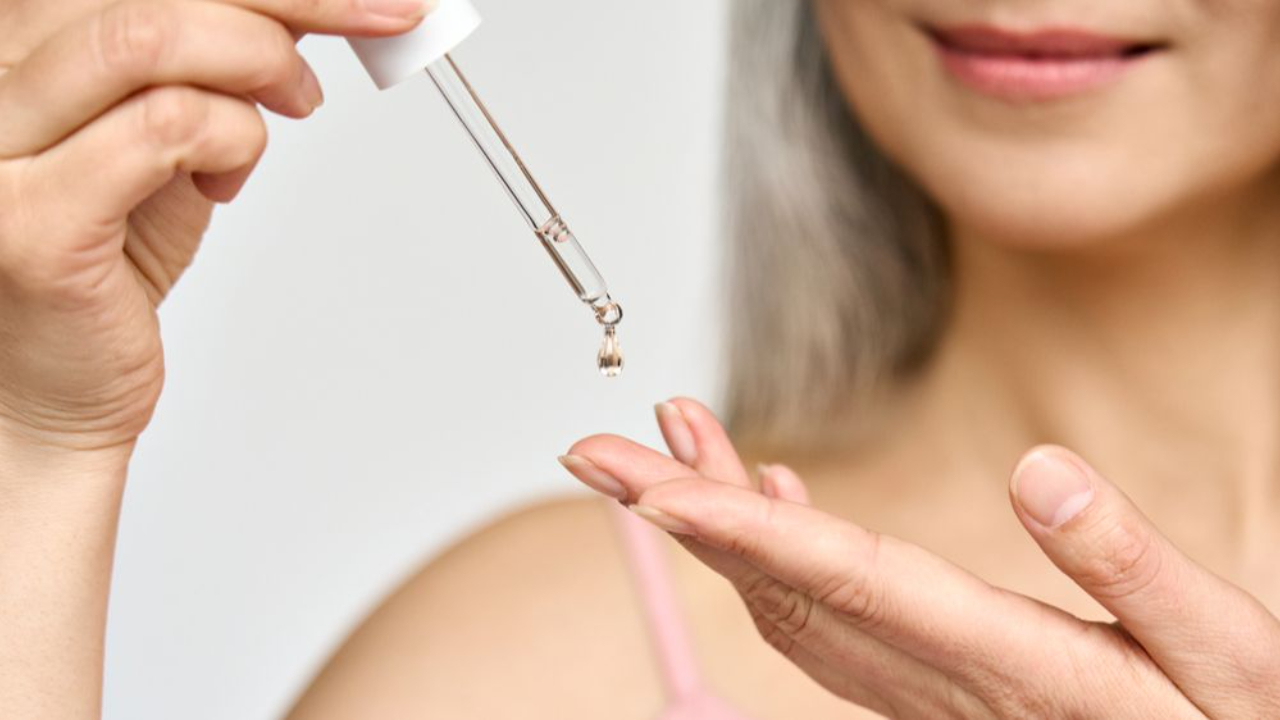Hyaluronic acid and menopause

Hyaluronic acid is a naturally produced “moisture magnet” that can do wonders for women in their menopausal transition. As it can help provide little more hydration or lubrication throughout their body. Hyaluronic acid is abbreviated to HA.
HA, is well-known in the skin industry. It really is the ultimate skin-hydrating superstar. Many have heard of its ability to reduce the signs of aging in your skin. It helps reduces fine lines and wrinkles. Allows the skin to stretch and move, applying it directly to your skin can help prevent the formation of stretch marks. It can also promote faster healing times and reduce scar formation.
But it's so much more than just a skin nutrient
Its found in higher concentrations in your
-
Connective tissues
-
Intervertebral disc
-
Joints
-
Nerve tissue
-
Bodily fluids such as tears, blood, urine, vaginal mucous
So what is HA? It is a unique glycosaminoglycan, think of it as a watery rich gelatinous substance. It contains a really long chain of disaccharide molecules. Ranging from 5000 to 20,000 units in length. Its size dictations its function and preferred location.
Its primary functions include
-
Hydration and lubrication. It can hold up to 1000 times its weight in water, think of it as a sponge, holding and binding water in place.
-
Holding water, it acts like a reservoir and provides extra strength and flexibility to the tissue
-
It allows for the smooth gliding of internal organs
-
It allows for the transportation of various metabolic substances
-
Acts as shock absorbers in your joints and vertebra
-
Holds together various connective structures
-
Assists in wound healing
-
May act as an anti-inflammatory agent and may reduce pain.
The human body can produce its own HA but as our hormones change with the menopausal transition this can alter our ability to produce adequate amounts. But it’s not just HA that drops, it’s also collagen and elastin levels that fall. Collagen helps provide structure, elastin allows the skin to stretch and HA helps to provide hydration. Luckily there are food sources and supplements that can help increase all 3 of these.
My favorite use of HA is for vaginal health. I often prescribe my patients personalized compounded vaginal pessaries or you might know them as vaginal supposition. I like using HA as a base and I add other ingredients like fat-soluble nutrients or specific herbs depending on the woman I’m working with. One small study titled Comparison of the Hyaluronic acid vaginal cream and conjugated oestrogen used in the treatment of vaginal atrophy of menopause women actually found HA to be superior but a few things to note with this trial is it was small, only 56 women and it used Premarin a conjugated estrogen which we have moved away from using. Regardless this study found both treatments arms significantly improved but the HA group was more effective. Something to think about, if you are looking for a hormone-free option.
When it comes to pain, it may help reduce joint pain, myofascial pain, and nerve pain.
Some specialists use it as an injection, directly into the problem area.
While we are talking about injections, recently in my article called Oral health and your menopausal transition, I mentioned how some dentists inject it directly into gums to help stimulate the regeneration and plumpness of gum tissue.
We can’t talk about HA without discussing your eyes. HA was first discovered in 1934 when it was isolated from a cow's eyes. We now know it plays a meaningful job supplying nutrients to your cornea. The cornea doesn’t have a blood supply but it has large amounts of HA that supply nutrients and removes waste products. It also helps to prevent inflammation in the eye and the eyelid margins. These days you can buy HA eye drops to help ease dry eye syndrome.
Bladder installation of HA may help with the prevention of reoccurring urinary tract infections.
I’m currently trialing a new shampoo and condition and these contain HA. When it comes to hair HA may reduce dryness, and brittleness while promoting softer, shiner hair.
There are even HA-containing nail-strengthening solutions. In nails, HA may strengthen them and reduce brittleness. It may also help hydrate and support the cuticle protecting it from drying out and cracking.
There is also talk of taking HA to help provide mucosal protection for individuals experiencing acid reflux.
The body’s natural production of HA can be stimulated by moderate exercise, manual therapies like massage or chiropractic treatments, and thermotherapy (think hot and cold treatment)
When it comes to diet you can’t beat animal products as these actually contain HA. Great sources include bone broth and organ meats. These also contain good amounts of collagen and elastin.
Vegetarian-based options don’t actually contain HA but rather they contain ingredients that may help increase your body’s production or may slow down its breakdown.
As for supplements there are plenty of oral HA supplements available or another way to directly increase HA is to take a Pycnogenol supplement, this French maritime pine tree bark extract helps increase your body’s natural ability to produce collagen and HA.
There are always risks when taking supplements. From my research, I found these warnings. With oral supplements.
-
It may increase kidney stones in women with a history of stones.
-
It is not recommended for women with cancer or a history of cancer.
Topical use is not recommended for women with scleroderma.


